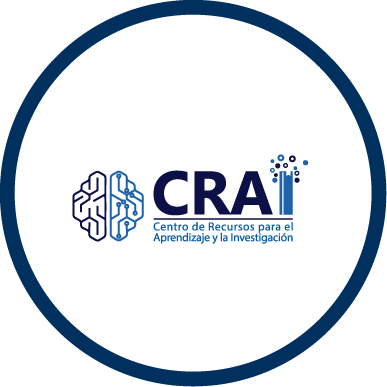Análisis retrospectivo de visitas de verificación por presunto maltrato animal (IDPYBA 2019)
Propia
Guardado en:
| Autor principal: | |
|---|---|
| Otros Autores: | |
| Formato: | Tesis y disertaciones (Maestría y/o Doctorado) |
| Lenguaje: | spa |
| Publicado: |
Universidad Antonio Nariño
2021
|
| Materias: | |
| Acceso en línea: | http://repositorio.uan.edu.co/handle/123456789/2401 |
| Etiquetas: |
Agregar Etiqueta
Sin Etiquetas, Sea el primero en etiquetar este registro!
|
| _version_ | 1812648212016660480 |
|---|---|
| author | Tarquino Peñuela, Julián Alberto |
| author2 | Garzón Jiménez, Sandra |
| author_facet | Garzón Jiménez, Sandra Tarquino Peñuela, Julián Alberto |
| author_sort | Tarquino Peñuela, Julián Alberto |
| collection | DSpace |
| description | Propia |
| format | Tesis y disertaciones (Maestría y/o Doctorado) |
| id | repositorio.uan.edu.co-123456789-2401 |
| institution | Repositorio Digital UAN |
| language | spa |
| publishDate | 2021 |
| publisher | Universidad Antonio Nariño |
| record_format | dspace |
| spelling | repositorio.uan.edu.co-123456789-24012024-10-09T23:17:24Z Análisis retrospectivo de visitas de verificación por presunto maltrato animal (IDPYBA 2019) Tarquino Peñuela, Julián Alberto Garzón Jiménez, Sandra Cruz, Jaime Fabián González Niño, Juan Camilo Animales Bienestar Animal Caninos Maltrato Animal Violencia Animals Animal abuse Animal Welfare Canine Violence Propia This research focused on conducting a descriptive study on the dynamics of animal abuse in Bogotá, since at present, the city does not have a structured baseline where such information is useful to improve the efficiency and increase the effectiveness in the processes of attention to animals. The foregoing, through the retrospective analysis of the visits to verify the welfare conditions made to canines and felines by the Instituto Distrital de Protección y Bienestar Animal due to alleged abuse in Bogotá during 2019. 1.763 records of the database of the Institute animal abuse program, which, after having met the inclusion criteria, were submitted to the SPSS version 17.0 program to generate the statistical analysis, and finally submitted to the univariate descriptive analysis. As part of the results, it was possible to determine that, for the canine species, males under 3 years of age, small in size, mixed breed and used for companionship are those with the greatest susceptibility to being victims of abuse; while, for the feline species, it is males under 1 year of age, of mixed breed and immersed in hoarding situations, those with the greatest susceptibility to being victims of abuse. Likewise, with respect to demographic variables, there was similarity in the predisposition to the presentation of different types of violence (including towards animals), according to the geographical and socioeconomic conditions of the territory. Similarly, the typologies of animal abuse with the highest presentation were neglect, overexploitation, and abandonment; while the parameters of welfare with the greatest impact were those of health and comfort, closely followed by those of nutrition. Finally, it is relevant to mention that the studies included in the discussion mostly agreed, in terms of results, with those obtained in this research. Esta investigación se enfocó en realizar un estudio descriptivo sobre la dinámica del maltrato animal en Bogotá, pues en la actualidad, la ciudad no cuenta con una línea base estructurada en donde dicha información sea útil para mejorar la eficacia y aumentar la efectividad en los procesos de atención hacia a los animales. Lo anterior, mediante el análisis retrospectivo de las visitas de verificación de condiciones de bienestar realizadas a caninos y felinos por el Instituto Distrital de Protección y Bienestar Animal a causa de presunto maltrato en Bogotá durante el año 2019. Se trabajaron 1.763 registros de la base de datos del programa de maltrato animal del Instituto, los cuales, posterior a haber cumplido los criterios de inclusión, fueron sometidos al programa SPSS versión 17.0 para la generación del análisis estadístico y sometiéndolos finalmente al análisis descriptivo univariado. Como parte de los resultados, fue posible determinar que, para la especie canina, son los machos menores de 3 años, de tamaño pequeño, raza mestiza y utilizados para compañía los de mayor susceptibilidad de ser víctimas de maltrato; mientras que, para la especie felina, son los machos menores de 1 año, de raza mestiza e inmersos en situaciones de acaparamiento los de mayor susceptibilidad a ser víctimas de maltrato. Así mismo, respecto a las variables demográficas, hubo similitud en la predisposición a la presentación de distintos tipos de violencia (incluida hacia los animales), según las condiciones geográficas y socioeconómicas del territorio. De igual forma, las tipologías de maltrato animal de mayor presentación fueron la negligencia, sobreexplotación y abandono; mientras que, los parámetros de bienestar de mayor afectación fueron los de salud y confort, seguidos muy de cerca de los de nutrición. Finalmente, es relevante mencionar que los estudios incluidos dentro de la discusión coincidieron mayoritariamente, en cuanto a resultados, con los obtenidos en esta investigación. Magíster en Bienestar Animal Maestría Presencial 2021-03-03T02:21:03Z 2021-03-03T02:21:03Z 2020-11-05 Tesis y disertaciones (Maestría y/o Doctorado) info:eu-repo/semantics/acceptedVersion http://purl.org/coar/resource_type/c_bdcc http://purl.org/coar/version/c_970fb48d4fbd8a85 http://repositorio.uan.edu.co/handle/123456789/2401 Ambrosio, M. T. y Ángeles, M. (2017). El maltrato y la crueldad contra los animales. Su importancia desde la perspectiva de la criminología [Libro electrónico]. En M.T. Ambrosio (Ed.), la protección jurídica de los animales (1.a ed., Vol. 2, pp. 155-179). https://biblio.juridicas.unam.mx/bjv/detalle-libro/4436-la-proteccion-juridica-de-los-animales Arkow, P. (2015). Recognizing and responding to cases of suspected animal cruelty, abuse, and neglect: what the veterinarian needs to know. Veterinary Medicine: Research and Reports, 349. https://doi.org/10.2147/vmrr.s87198 Ascione, F.R. (1993). Children who are cruel to animals: A review of research and implications for developmental psychopathology. Anthrozoös 6(4), 226-247 Bandura, A. (1977). Social Learning Theory (General Learning Press 1977) Baquero, O. S., Ferreira, F., Robis, M., Neto, J. S. F., & Onell, J. A. (2018). Bayesian spatial models of the association between interpersonal violence, animal abuse and social vulnerability in São Paulo, Brazil. Preventive Veterinary Medicine, 152, 48-55. https://doi.org/10.1016/j.prevetmed.2018.01.008 Bennett, P. C., & Rohlf, V. I. (2007). Owner-companion dog interactions: Relationships between demographic variables, potentially problematic behaviours, training engagement and shared activities. Applied Animal Behaviour Science, 102(1-2), 65-84. https://doi.org/10.1016/j.applanim.2006.03.009 Broom, D. (1986). Indicators of poor welfare. British Veterinary Journal, 142(6), 524–526. https://doi.org/10.1016/0007-1935(86)90109-0 DeViney, E., Dickert, J. and Lockwood, R., (1983), “The care of pets within child abusing families.” International Journal for the Study of Animal Problems 4:321-329. (1) (PDF) The care of pets within child abusing families. Available from: https://www.researchgate.net/publication/284089446_The_care_of_pets_within_child_abusing_families Díaz, M. (2020, agosto 3). Robo de bicicletas en Bogotá: el delito que no da tregua. El Tiempo. Recuperado de https://www.eltiempo.com/bogota/indicadores-de-seguridad-en-bogota-2020-sigue-subiendo-robo-de-bicicletas-525604 Donley, L., Patronek, G. J., & Luke, C. (1999). Animal Abuse in Massachusetts: A Summary of Case Reports at the MSPCA and Attitudes of Massachusetts Veterinarians. Journal of Applied Animal Welfare Science, 2(1), 59–73. https://doi.org/10.1207/s15327604jaws0201_5 Enciso, G. (2019 agosto 2). Localidades más inseguras de Bogotá durante el último año. Siete 24. Recuperado de https://blog.siete24.com/localidades-mas-inseguras-de-bogota-durante-el-altimo-a%C3%B1o Encyclopaedia Britannica, 15th ed. (1987). Micropaedia. Ed. Goetz, P.W. 15th ed, Vol. 1, Animals, Cruelty to, 420 Estol, L. (2018). Medir el Bienestar Animal científicamente. Recuperado 22 noviembre, 2019, de https://www.engormix.com/ganaderia-carne/articulos/medir-bienestar-animal-cientificamente-t27519.htm Federal Bureau of Investigation - FBI & Observatorio de Violencia Hacia los Animales. (2017). Informe del fbi sobre violencia hacia los animales (N.o 1). http://obsviolenciaanimal.org/wp-content/uploads/2019/01/NIRBS-2017-DEF.pdf Felthous, A.R., y Kellert S.R. (1986). Childhood cruelty towards animals among criminals and non-criminals. In The human-pet relationship, pp. 71–82. Vienna: IEMT Fernández, L. (2013). El maltrato animal desde el punto de vista criminológico. Derecho y Cambio Social, 0(0), 1–11. Recuperado de www.derechoycambiosocial.com Flynn, C. P. (2000). Woman’s Best Friend: Pet Abuse and the Role of Companion Animals in the Lives of Battered Women. Violence Against Women, 6(2), 162–177. https://doi.org/10.1177/10778010022181778 Flynn, C. (2001). Acknowledging the “Zoological Connection”: A Sociological Analysis of Animal Cruelty. Society & Animals, 9(1), 71–87 García, R. (s.f.). About One Welfare. Recuperado 22 noviembre, 2019, de https://www.onewelfareworld.org/about.html García Solé, Marc (2015). El delito de maltrato a los animales. El maltrato legislativo a su protección. Revista de Bioética y Derecho. Recuperado de: https://www.redalyc.org/articulo.oa?id=783/78343122008 Gerdin, J. A., & McDonough, S. P. (2013). Forensic Pathology of Companion Animal Abuse and Neglect. Veterinary Pathology, 50(6), 994–1006. https://doi.org/10.1177/0300985813488895 Gómez, L., Atehortua, C., Orozco, S. (2007). La influencia de las mascotas en la vida humana. Revista Colombiana de Ciencias Pecuarias 2007; 20:377-386. Recuperado de: https://www.redalyc.org/pdf/2950/295023025016.pdf Gullone, E. (2011). Conceptualising Animal Abuse with an Antisocial Behaviour Framework. Animals, 1(1), 144–160. https://doi.org/10.3390/ani1010144 Hammerschmid, J., & Molento, C. F. M. (2013). Análise retrospectiva de denúncias de maus-tratos contra animais na região de Curitiba, Estado do Paraná, utilizando critérios de bem-estar animal. Brazilian Journal of Veterinary Research and Animal Science, 49(6), 431. https://doi.org/10.11606/issn.1678-4456.v49i6p431-441 Hammerschmidt, J., & Molento, C. F. M. (2014). Protocolo de perícia em bem-estar animal para diagnóstico de maus-tratos contra animais de companhia. Brazilian Journal of Veterinary Research and Animal Science, 51(4), 282. https://doi.org/10.11606/issn.1678-4456.v51i4p282-296 Hensley, C., Tallichet, S.E., Dutkiewicz, E.L., (2010). Childhood bestiality: a potential precursor to adult interpersonal violence. J. Interpers. Violence 25, 557–567. http://dx.doi.org/10.1177/0886260509360988 Herbert Garrido, A. (2020). Animal Abuse: The Hidden Victims of Domestic Violence. Derecho Animal. Forum of Animal Law Studies, 11(1), 14. https://doi.org/10.5565/rev/da.471 Hudson, N. (2018, julio 13). Finder. Recuperado de https://www.finder.com/es/perros-mas-populares-alrededor-del-mundo Keri B. Burchfield (2016). The Sociology of Animal Crime: An Examination of Incidents and Arrests in Chicago, Deviant Behavior. http://dx.doi.org/10.1080/01639625.2015.1026769 Josa, J., & Makowski, M. (2009). El maltrato animal como indicador de riesgo social. Información Veterinaria, 4(4), 16–19 Lockwood, R., & Arkow, P. (2016). Animal Abuse and Interpersonal Violence. Veterinary Pathology, 53(5), 910-918. https://doi.org/10.1177/0300985815626575 Magnabosco, C. (2006). População domiciliada de cães e gatos em São Paulo: perfil obtido através de um inquérito domiciliar multicêntrico. Dissertação de Mestrado. Faculdade de Saúde Pública, Universidade de São Paulo, São Paulo. doi: 10.11606/D.6.2006.tde-06032007-104453. Recuperado em 2020-09-27, de www.teses.usp.br Marlet, E., & Maiorka, P. (2010). Análise retrospectiva de casos de maus tratos contra cães e gatos na cidade de São Paulo. Braz. J. Vet. Res. Anim. Sci., São Paulo, 47(5), 385-394. https://pesquisa.bvsalud.org/portal/resource/pt/vti-4665 Mascotas. (2018, noviembre 22). Las familias colombianas tienen más mascotas y menos hijos. Dinero. Recuperado de https://www.dinero.com/edicion-impresa/negocios/articulo/mascotas-en-los-hogares-de-colombia-en-2018/264423 Mazas, B. (2014). La actitud hacia el bienestar animal en el ámbito educativo (Tesis doctoral). Universidad de Zaragoza, España Mellor, D. (2016). Review: Moving beyond the “Five Freedoms” by Updating the “Five Provisions” and Introducing Aligned “Animal Welfare Aims”. Animals. 6, 59 Mellor, D. (2016). Updating Animal Welfare Thinking: Moving beyond the “Five Freedoms” towards “A LifeWorth Living”. Animals. 6, 21; doi:10.3390/ani6030021 Mesa, S & Seña, E. (2013). Argumentación en torno al concepto ‘lo vivo’: discusiones sobre el maltrato animal como asunto sociocientífico (Tesis de Maestría). Universidad de Antioquia, Colombia Ministerio del Interior de Colombia - Mininterior (2018). Guía para el manejo de denuncias en casos de maltrato animal. Recuperado de: https://www.mininterior.gov.co/content/guia-contra-el-maltrato-animal Monsalve, S., Hammerschmidt, J., Izar, M. L., Marconcin, S., Rizzato, F., Polo, G., & Garcia, R. (2018). Associated factors of companion animal neglect in the family environment in Pinhais, Brazil. Preventive Veterinary Medicine, 157, 19-25. https://doi.org/10.1016/j.prevetmed.2018.05.017 Monsalve, S., Pereira, É. L., Leite, L. O., Polo, G., & Garcia, R. (2019). Perception, knowledge and attitudes of small animal practitioners regarding animal abuse and interpersonal violence in Brazil and Colombia. Research in Veterinary Science, 124, 61-69. https://doi.org/10.1016/j.rvsc.2019.03.002 Moreno J. (2018). Las mascotas mueven casi un billón de pesos de la economía del país. Revista Portafolio. Recuperado de https://www.portafolio.co/negocios/las-mascotas-mueven-casi-un-billon-de-pesos-de-la-economia-del-pais-524357 Munro, H. M. C., & Munro, R. (2008). Animal Abuse and Unlawful Killing: Forensic veterinary pathology (English Edition) (1.a ed.). Saunders Ltd Nathanson, J.N., (2009). Animal hoarding: slipping into the darkness of comorbid animal and self-neglect. J. Elder Abuse Negl. 21, 307–324. http://dx.doi.org/10.1080/08946560903004839 Organización Mundial de la Sanidad Animal - OIE (2019). Introducción a las recomendaciones para el bienestar de los animales. In Organización Mundial de la Sanidad Animal (Ed.), Código Sanitario para los Animales Terrestres (pp. 1–3). Recuperado de: https://www.oie.int/index.php?id=169&L=2&htmfile=chapitre_aw_introduction.htm Pagani, C., Robustelli, F., & Ascione, F. R. (2010). Investigating Animal Abuse: Some Theoretical and Methodological Issues. Anthrozoös, 23(3), 259–276. https://doi.org/10.2752/175303710x12750451259011 Patronek, G. J., Sacks, J. J., Delise, K. M., Cleary, D. V., & Marder, A. R. (2013). Co-occurrence of potentially preventable factors in 256 dog bite–related fatalities in the United States (2000–2009). Journal of the American Veterinary Medical Association, 243(12), 1726-1736. https://doi.org/10.2460/javma.243.12.1726 Pérez-Cárceles, M.D., Rubio, L., Pereniguez, J.E., Pérez-Flores, D., Osuna, E., Luna, A., (2009). Suspicion of elder abuse in South Eastern Spain: the extent and risk factors. Arch. Gerontol. Geriatr. 49, 132–137. http://dx.doi.org/10.1016/j.archger.2008.06.002 Polo, G., Calderón, N., Clothier, S., Garcia, R.D.C.M., (2015). Understanding dog aggression: epidemiologic aspects. In memoriam, Rudy de Meester (1953-2012). J. Vet. Behav: Clin. Appl. Res. 10 (6), 525–534. http://dx.doi.org/10.1016/j.jveb.2015.09.003 Redacción. (2016, julio 22). Las diez razas de gatos que hay en Colombia. El Tiempo. Recuperado de https://www.eltiempo.com/archivo/documento/CMS-16651522 Redacción. (2020, julio 2). Homicidios y hurto de bicicletas, los delitos que han aumentado en Bogotá en los últimos seis meses. El Espectador. Recuperado de https://www.elespectador.com/noticias/bogota/bogota-cifras-de-seguridad-primer-semestre-de-2020/ Rincón, E. (2011). Algunas razones filosóficas contra el maltrato animal. Polisemia, (11), 76–89 Sandoval, C. (2018). Informe de Gestión y Resultados (1-1-2018). Recuperado de http://www.proteccionanimalbogota.gov.co/transparencia/planeacion/informes-gesti%C3%B3n/informe-gestion-2018 Scheffer, G. K. (2019). Animal abuse: A close relationship with domestic violence. Derecho Animal. Forum of Animal Law Studies, 10(2), 56. https://doi.org/10.5565/rev/da.425 Serrano, M. (2004). El Maltrato de los Animales. Revista de Derecho Penal y Criminología, Extraordinario (2), 501–526 Sidebotham, P., Heron, J., (2006). Child maltreatment in the “children of the nineties”: a cohort study of risk factors. Child Abuse Negl. 30, 497–522. http://dx.doi.org/10.1016/j.chiabu.2005.11.005 Silva, A.J., Guilloux, A.G., Zetun, C.B., Polo, G., Braga, G.B., Panachão, L.I., Santos, O., Dias, R.A., (2013). Abandono de cães na América Latina: revisão de literatura. Revista de Educação Continuada em Medicina Veterinária e Zootecnia do CRMV-SP 11 (2), 34–41 Singer, P. (1972). Liberación Animal. Recuperado de: http://www.sinparadigmas.com/animalistas/Peter_Singer_Liberacion_Animal.pdf Valencia, M. (2020, julio 7). SOS desde el Concejo por cifras de inseguridad en Bogotá. RCN Radio. Recuperado de https://www.rcnradio.com/bogota/sos-desde-el-concejo-por-cifras-de-inseguridad-en-bogota Vaughn, M. G., Fu, Q., DeLisi, M., Beaver, K. M., Perron, B. E., Terrell, K., & Howard, M. O. (2009). Correlates of cruelty to animals in the United States: results from the National Epidemiologic Survey on Alcohol and Related Conditions. Journal of psychiatric research, 43(15), 1213–1218. https://doi.org/10.1016/j.jpsychires.2009.04.011 Vermeulen, H., & Odendaal, J. S. (1993). Proposed Typology of Companion Animal Abuse. Anthrozoös, 6(4), 248–257. https://doi.org/10.2752/089279393787002178 Vida y salud. (2020, agosto 26). El perro, la mascota preferida en Colombia. La Opinión. Recuperado de https://www.laopinion.com.co/vida-y-salud/el-perro-la-mascota-preferida-en-colombia-201672 Vieira, L.J.E.D.S., Pordeus, A.M.J., Ferreira, R.C., Moreira, D.P., Maia, P.B., Saviolli, K.C., (2008). Fatores de risco para violência contra a mulher no contexto doméstico e coletivo. Saude e Soc. 17, 113–125. http://dx.doi.org/10.1590/S0104-12902008000300012 Webster, J. (2016). Animal Welfare: Freedoms, Dominions and “A Life Worth Living”. Animals. 6, 35 instname:Universidad Antonio Nariño reponame:Repositorio Institucional UAN repourl:https://repositorio.uan.edu.co/ spa Acceso abierto Attribution-NonCommercial-NoDerivatives 4.0 International (CC BY-NC-ND 4.0) https://creativecommons.org/licenses/by-nc-nd/4.0/ info:eu-repo/semantics/openAccess http://purl.org/coar/access_right/c_abf2 application/pdf application/pdf Universidad Antonio Nariño Maestría en Bienestar Animal Facultad de Medicina Veterinaria Bogotá - Circunvalar |
| spellingShingle | Animales Bienestar Animal Caninos Maltrato Animal Violencia Animals Animal abuse Animal Welfare Canine Violence Tarquino Peñuela, Julián Alberto Análisis retrospectivo de visitas de verificación por presunto maltrato animal (IDPYBA 2019) |
| title | Análisis retrospectivo de visitas de verificación por presunto maltrato animal (IDPYBA 2019) |
| title_full | Análisis retrospectivo de visitas de verificación por presunto maltrato animal (IDPYBA 2019) |
| title_fullStr | Análisis retrospectivo de visitas de verificación por presunto maltrato animal (IDPYBA 2019) |
| title_full_unstemmed | Análisis retrospectivo de visitas de verificación por presunto maltrato animal (IDPYBA 2019) |
| title_short | Análisis retrospectivo de visitas de verificación por presunto maltrato animal (IDPYBA 2019) |
| title_sort | analisis retrospectivo de visitas de verificacion por presunto maltrato animal idpyba 2019 |
| topic | Animales Bienestar Animal Caninos Maltrato Animal Violencia Animals Animal abuse Animal Welfare Canine Violence |
| url | http://repositorio.uan.edu.co/handle/123456789/2401 |
| work_keys_str_mv | AT tarquinopenuelajulianalberto analisisretrospectivodevisitasdeverificacionporpresuntomaltratoanimalidpyba2019 |




